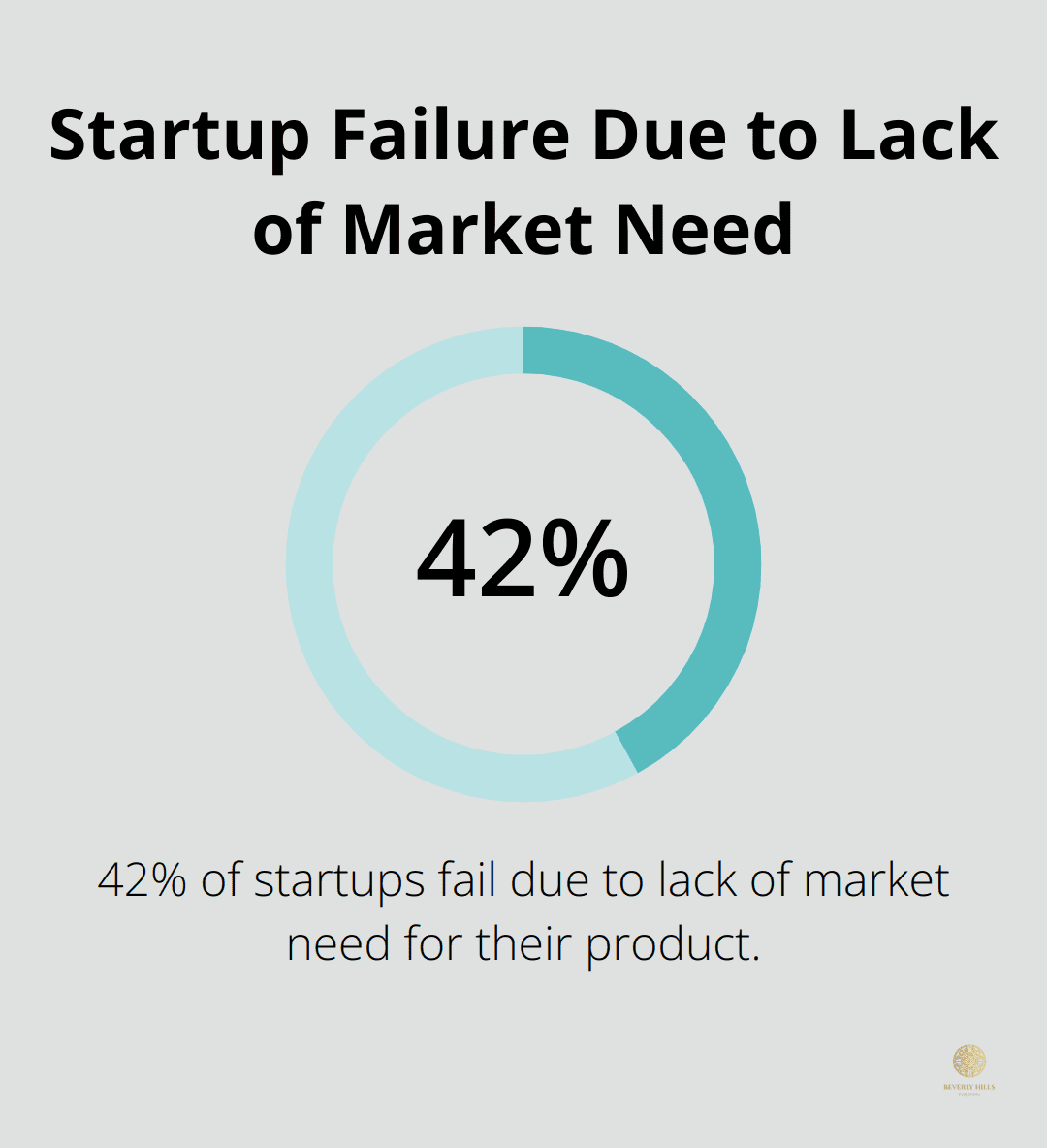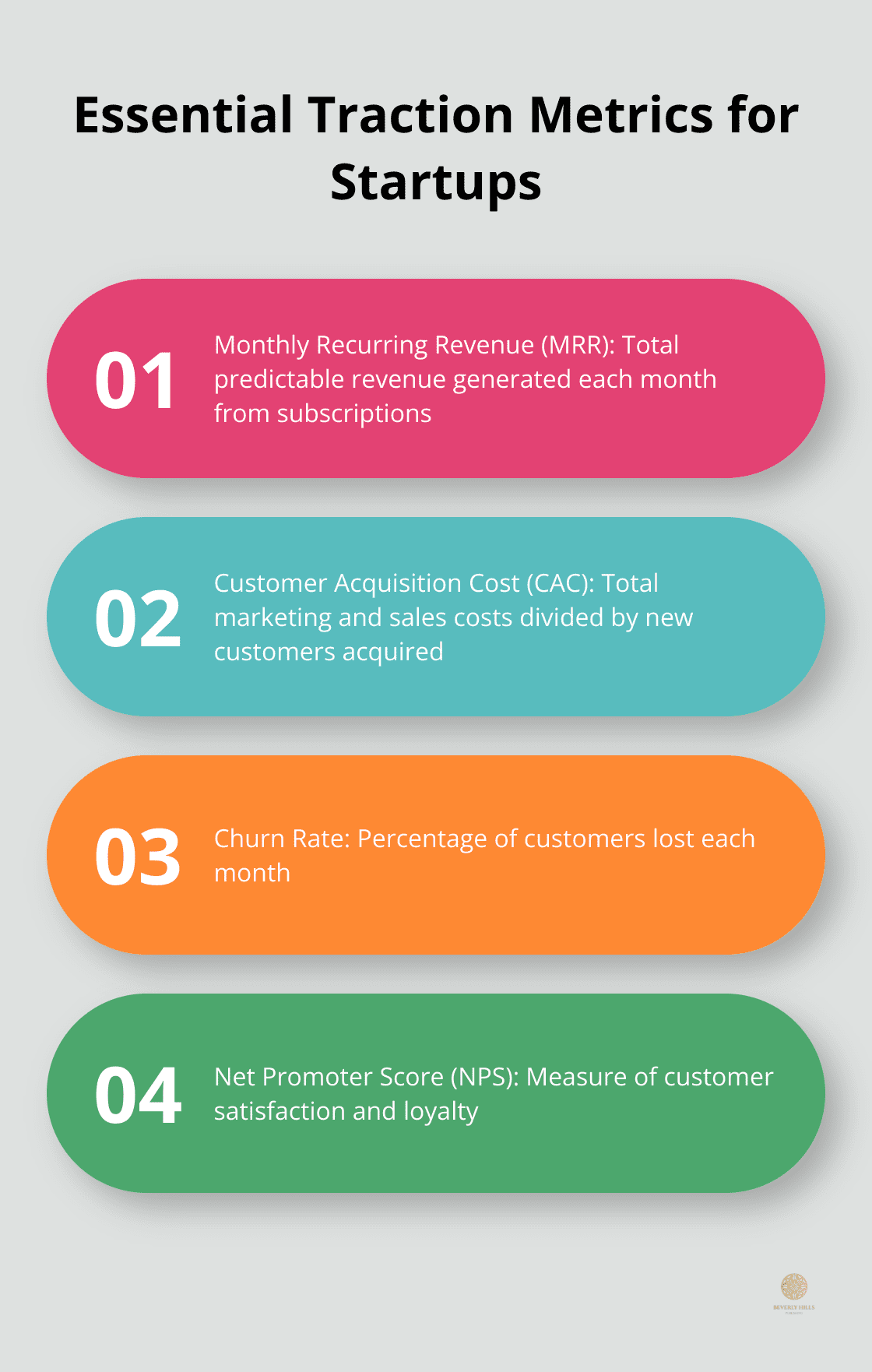At Beverly Hills Publishing, we understand the challenges startups face in gaining market traction. This guide will equip you with practical strategies to boost your startup’s visibility and growth.
We’ll explore effective traction channels, implementation techniques, and key metrics for measuring success. Drawing insights from popular traction marketing books, we’ll help you create a robust marketing strategy that drives sustainable growth for your startup.
What Is Traction and Why Does It Matter?
The Essence of Startup Success
Traction forms the foundation of startup success. It provides measurable evidence that your product or service gains market acceptance and momentum. At its core, traction proves that your startup isn’t just a great idea, but a viable business with real customers and revenue.
Proof in Numbers
Traction transcends mere buzzwords; it represents hard data that demonstrates your startup’s ability to solve real problems for real people. It distinguishes startups that make waves in the market from those that only talk. Investors, partners, and potential employees seek traction as a sign of a startup’s worth.
A CB Insights report reveals that 42% of startups fail due to lack of market need for their product. This statistic highlights the importance of traction. It’s insufficient to have a product you believe people want; you must prove they actually want it.

Key Metrics for Traction
Traction measurement extends beyond vanity metrics like page views or social media followers. Real traction ties directly to your business model and growth. Focus on these key metrics:

- Monthly Recurring Revenue (MRR): The total predictable revenue your SaaS business generates each month from subscription-based customers.
- Customer Acquisition Cost (CAC): The total marketing and sales costs divided by the number of new customers acquired.
- Churn Rate: The percentage of customers lost each month (a high churn rate can sink even promising startups).
- Net Promoter Score (NPS): A measure of customer satisfaction and loyalty (happy customers tend to stick around and refer others).
Effective Traction Channels
Different startups find success through various traction channels. B2B SaaS companies might employ different strategies than consumer apps. Experiment with various channels and focus on what works for your specific business.
Content marketing and SEO can establish thought leadership. HubSpot reports that companies that blog receive 55% more website visitors than those that don’t. Create content that solves your target audience’s problems and addresses their pain points.
Social media can drive traction, but engagement trumps follower count. Sprout Social states that 57% of consumers follow brands to learn about new products or services. Use social media to showcase your product, share customer success stories, and build a community around your brand.
The Ongoing Journey of Traction
Traction isn’t a one-time achievement; it’s a continuous process of growth and validation. Maintain a cycle of experimentation, measurement, and strategy adaptation to accelerate your traction. In the next section, we’ll explore specific traction channels and strategies to leverage them for your startup’s success (including insights from industry leaders like Beverly Hills Publishing™).
Traction Channels That Drive Results
Content Marketing: Your Strategic Asset
Content marketing proves to be a powerhouse for startup traction. HubSpot’s data shows businesses that blog receive 55% more website visitors than those that don’t. The key lies in creating value, not just content.
Solve your audience’s problems. Tools like AnswerThePublic uncover potential customers’ questions. Create in-depth guides, case studies, and how-to articles that address these queries.
SEO matters. Tools like Ahrefs or SEMrush help find low-competition keywords relevant to your industry. Incorporate these naturally into your content to improve search engine rankings.
Social Media: Cultivate Engagement
Social media success extends beyond follower counts; it’s about fostering engagement. Sprout Social reports 57% of consumers follow brands to learn about new products or services.

Select platforms where your target audience congregates. B2B startups might find LinkedIn most effective, while consumer products could thrive on Instagram or TikTok.
Share behind-the-scenes content, host live Q&A sessions, and respond actively to comments. These actions build trust and transform followers into brand advocates.
Influencer Partnerships: Amplify Your Reach
Influencer marketing can supercharge traction efforts. A Tomoson study found businesses see an average rate of return of $6.50 for every $1 spent on influencer marketing.
Look beyond follower counts. Micro-influencers (10,000-100,000 followers) in your niche often have higher engagement rates and more targeted audiences.
Provide value to influencers beyond monetary compensation. Offer exclusive product access, involve them in product development, or feature them prominently in marketing materials.
Paid Advertising: Precision Targeting
While organic growth is ideal, paid advertising can jumpstart traction efforts. Google Ads and Facebook Ads offer powerful targeting options to reach ideal customers.
Start small and test different ad formats, copy, and targeting options. Use A/B testing to refine your approach. Monitor your Customer Acquisition Cost (CAC) closely to ensure a positive return on investment.
PR and Media Outreach: Boost Credibility
Features in reputable publications can skyrocket credibility and traction. Build relationships with journalists and provide genuinely newsworthy stories (rather than blasting out press releases).
Tools like HARO (Help a Reporter Out) connect you with journalists seeking sources in your industry. Offer expert commentary or unique data to become a valuable resource.
Traction isn’t about using every available channel. It’s about identifying the channels that work best for your startup and focusing on them. Test, measure, and refine your approach continuously. The next section will guide you through implementing these strategies effectively to maximize your startup’s traction.
Turning Traction Strategies into Action
Set Concrete, Measurable Goals
Start your traction journey by defining specific, quantifiable objectives. Replace vague aims like “increase brand awareness” with precise targets such as “achieve 10,000 monthly website visitors within six months.” This precision enables you to track progress and adjust strategies as needed.
A CoSchedule study revealed that marketers who set goals are 376% more likely to report success. Break down your overarching traction goal into smaller milestones. This approach creates a clear roadmap and helps maintain momentum.
Prioritize Your Traction Channels
Not all marketing channels yield equal results for your startup. Conduct a thorough analysis to identify which channels align best with your target audience and business model. Startups that pivot once or twice raise 2.5x more money, have 3.6x better user growth, and are 52% less likely to scale prematurely.
Start by experimenting with multiple channels, but quickly narrow your focus. Concentrate resources on the top two or three channels showing the most promise. This focused approach allows for deeper optimization and prevents spreading your efforts too thin.
Implement a Rigorous Testing Framework
Adopt a data-driven approach to traction. Create a structured testing framework that allows you to evaluate the effectiveness of different strategies quickly. The lean startup methodology, popularized by Eric Ries, emphasizes rapid experimentation and learning.
Establish clear metrics for each test, such as conversion rates or customer acquisition costs. Run tests for a predetermined period (typically 2-4 weeks) to gather sufficient data. This systematic approach helps separate truly effective strategies from those that only appear promising.
Analyze and Optimize Continuously
Regular analysis is essential for optimizing your traction efforts. Tools like Google Analytics and Mixpanel provide valuable insights into user behavior and campaign performance. A 2016 Forrester study found that 74% of companies claim they want to be data-driven, but only 29% succeed at turning analytics into action.
Don’t just collect data – act on it. If a particular blog post drives significant traffic, create more content on that topic. If certain ad copy resonates well, refine and expand on that messaging across other channels.
Scale What Works
Once you’ve identified your most effective traction channels, it’s time to double down. Allocate more resources to these proven strategies. However, scaling isn’t just about increasing spend. It involves refining processes, expanding reach, and maintaining quality as you grow.
For instance, if content marketing emerges as a top channel, consider hiring additional writers or partnering with industry experts to produce high-quality content at scale. If paid advertising shows promise, gradually increase your budget while continuously optimizing for better ROI.
The strategies that work today may not be as effective tomorrow. Stay agile and prepare to pivot as market conditions change. Consistently apply these principles to achieve sustainable growth and establish your startup as a market leader.
Final Thoughts
Traction forms the foundation of startup success. We explored key components of a robust traction strategy, from understanding metrics to implementing effective marketing channels. The journey to sustainable growth requires a data-driven approach and constant experimentation.
Traction marketing books offer valuable insights into proven strategies and common pitfalls to avoid. However, every startup’s path to traction is unique. What works for one may not work for another, so you must find the channels and tactics that resonate with your specific audience and business model.
At Beverly Hills Publishing™, we understand the challenges startups face in gaining traction. Our innovative approach to author branding and publishing can become a powerful tool in your traction arsenal. It will help you build credibility and visibility as you grow your business.















































































































































































































































